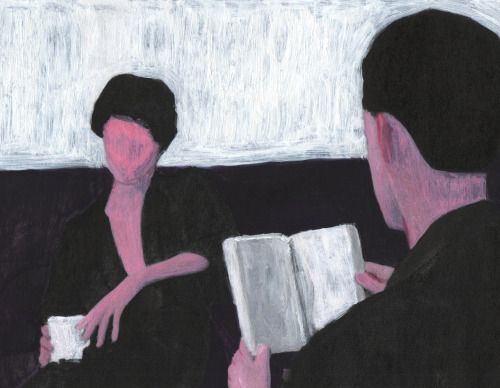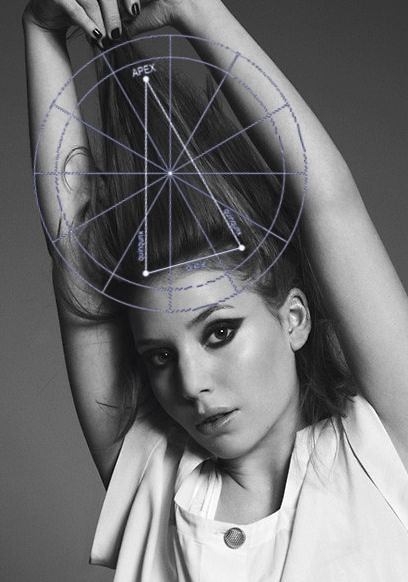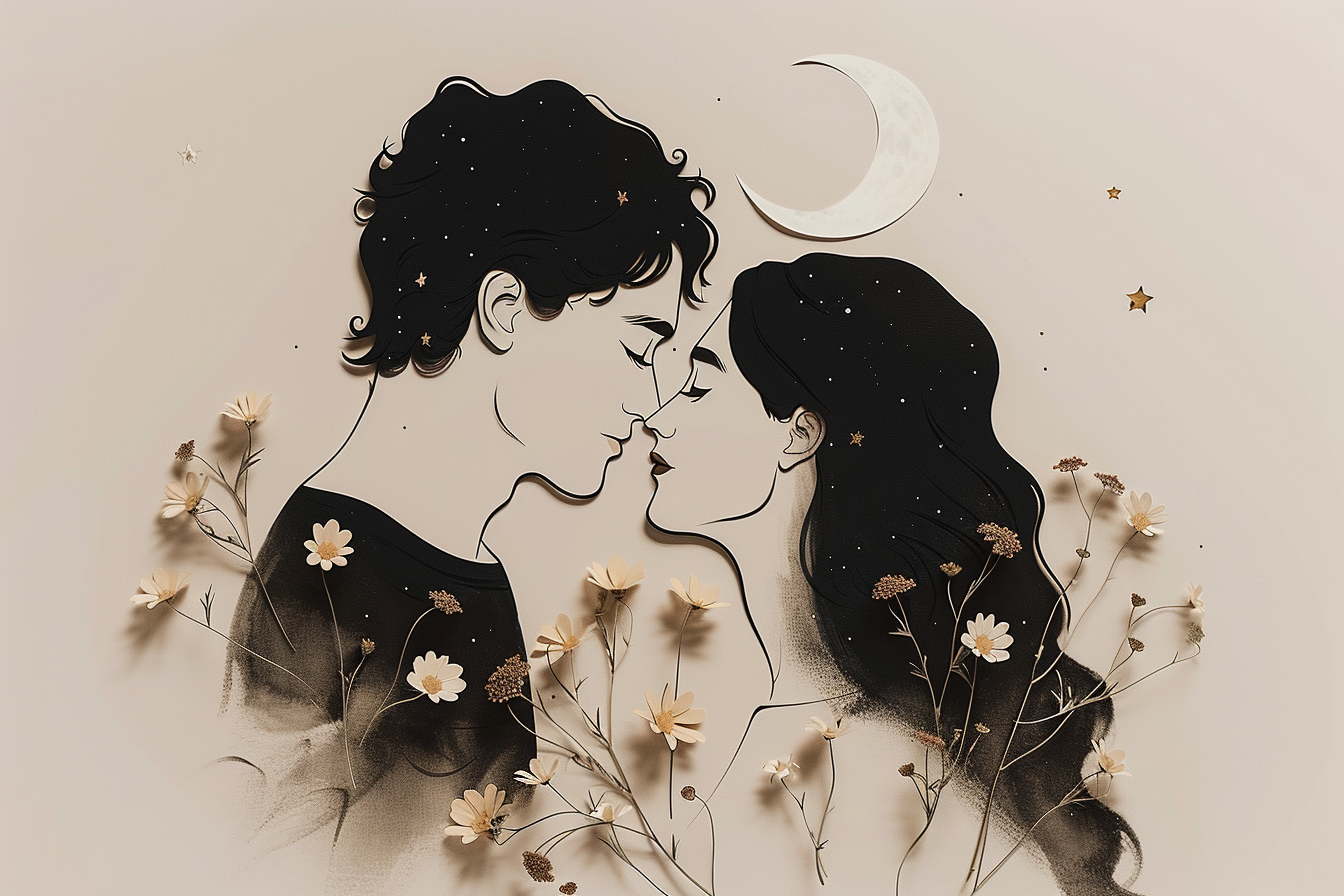
How Many Relationships Will I have?
 Astrologer Carol Rushman’s work on the natal promise for marriage presents a traditional technique that offers insights into an individual’s marital experiences by examining the placement of the Sun and its applying aspects within their natal chart. This technique provides a framework for understanding potential marital unions and relationships based on the positions of the luminaries at the time of a person’s birth. One particular aspect of this technique involves analyzing the Sun’s positions and its applying aspects, shedding light on the woman’s possible relationships.
Astrologer Carol Rushman’s work on the natal promise for marriage presents a traditional technique that offers insights into an individual’s marital experiences by examining the placement of the Sun and its applying aspects within their natal chart. This technique provides a framework for understanding potential marital unions and relationships based on the positions of the luminaries at the time of a person’s birth. One particular aspect of this technique involves analyzing the Sun’s positions and its applying aspects, shedding light on the woman’s possible relationships.
To illustrate the application of this technique, let’s consider the natal chart of the iconic actress Elizabeth Taylor. Taylor’s personal life was marked by a notable number of marriages, having been married eight times to seven different men (with a remarriage to Richard Burton). This strikingly high number of marriages makes her natal chart an intriguing case study for this astrological approach.
In Elizabeth Taylor’s natal chart, her Sun is located in the zodiac sign of Pisces at 7 degrees. Interestingly, this Sun’s degree corresponds numerically with the number of her husbands. However, the central premise of Carol Rushman’s technique revolves around not only the Sun’s placement but also its applying aspects—the interactions the Sun makes with other planets in the natal chart before leaving its current sign. In Elizabeth Taylor’s case, the Sun’s movement through Pisces forms a single trine aspect with Pluto in Cancer at 20 degrees.
According to this technique, this Sun-trine-Pluto aspect would symbolically indicate the potential for one marriage in Elizabeth Taylor’s life. However, as history shows, she had been married more than just once, which seemingly contradicts this interpretation. This discrepancy underscores the difficulty of making precise predictions in astrology and the idea that multiple factors within a natal chart contribute to an individual’s experiences and life path.
Elizabeth Taylor’s chart serves as a reminder that while certain astrological techniques offer intriguing insights, they should be viewed as part of a holistic analysis. Factors beyond just the Sun and its applying aspects—such as the positions of other planets, houses, and aspects—also play an important role in shaping an individual’s experiences, including their relationships and marriages.
I am using a chart sourced from Astrodatabank for this study, which holds a Rodden Rating of A. In contrast to other Elizabeth Taylor charts that propose Libra rising, this particular chart places her Venus-Uranus conjunction in Aries within the 7th house.
The choice between a Libra rising chart and a Sagittarius rising chart for Elizabeth Taylor does indeed introduce variations in her astrological profile. Each rising sign brings unique qualities and perspectives to her chart, potentially revealing different aspects of her life and personality. Opting for a Sagittarius Ascendant opens up connections to themes that resonate with her life and experiences. Sagittarius is often associated with a love for freedom, exploration, and a thirst for adventure. It aligns intriguingly with her role in the film “National Velvet,” which is centered around a horse and can symbolize the free-spirited nature of Sagittarius energy. This connection might serve as a symbolic representation of her Sagittarian Ascendant.
Elizabeth Taylor’s natal chart features Sagittarius rising with Gemini on the descendant, which marks the cusp of marriage. The descendant is thought to represent the qualities sought in a partner. Nevertheless, both ends of this polarity should be integrated into an individual’s personality, although often the characteristics on the seventh house cusp are experienced through interactions with others. Opposite signs on the zodiac wheel inherently stand in contrast to each other, but they also exhibit a high degree of complementarity. In this case, both Gemini and Sagittarius, positioned on the relationship axis, suggest a potential for multiple partners according to astrological interpretation.
The signs Gemini and Sagittarius both being multiple signs on the relationship axis (1st and 7th houses) can indeed suggest a propensity for multiple partners or relationships. In astrology, the 1st and 7th houses are often associated with different facets of an individual’s approach to relationships and partnerships. The Gemini Descendant indicates qualities she sought in partners—those who were intellectually stimulating, versatile, and communicative. Gemini’s influence on the Descendant suggests a preference for partners who could engage her in lively conversations, share her curiosity about the world, and bring a sense of mental connection to the relationship.
Astrologers frequently turn to the planet Venus for insights into matters of romance, courtship, and pleasure. Venus represents relationships, love, and beauty. It symbolizes personal values and significantly influences our romantic ideals. Venus embodies the feminine desire for connection and adaptation within the realm of personal relationships. Taylor’s placement of Venus in the self-oriented sign of Aries indicates a focus on the nascent potential of relationships. Even in the realm of marriage, Venus in Aries seeks to maintain love as a new and evolving experience. This placement suggests that she values independence, individuality, and a sense of adventure in her relationships. Venus in Aries desires newness and excitement in love, often preferring to initiate and take the lead. This placement could have contributed to her energetic approach to love, as well as her inclination to keep relationships dynamic and engaging.
“Nobody tells me who to love or not to love, who to be seen with and not to be seen with.” By Elizabeth Taylor
In astrological terms, the alignment between Venus and Jupiter through a trine aspect can have a profound influence on an individual’s approach to love and relationships. When this cosmic connection is present, as is the case with Venus trining Jupiter in the chart of Lizzie, it creates a harmonious flow of energy that enhances and amplifies certain personality traits and inclinations. Venus, the planet of love, beauty, and relationships, represents how one approaches affection, attraction, and emotional connections. On the other hand, Jupiter, known as the planet of expansion, growth, and optimism, signifies an individual’s approach to opportunities, exploration, and enthusiasm.
Considering that Jupiter is the chart ruler and holds sway over her Sagittarius rising sign, its influence is particularly prominent in shaping her overall personality. Sagittarius rising individuals are often characterized by their adventurous spirit, a thirst for knowledge, and an optimistic outlook on life. Jupiter’s benevolent influence, further amplified by the trine aspect to Venus, suggests that her approach to love and romance is strongly infused with these Sagittarian qualities.
This alignment translates into a seamless blending of their energies, enhancing her innate romantic nature with an added dose of expansive enthusiasm. As a result, her approach to relationships is one of openness, curiosity, and a genuine excitement for what lies ahead. Taylor’s naturally optimistic outlook on love is a direct manifestation of this Venus-Jupiter trine. She tends to see the potential for growth and positivity in her romantic experiences. No matter what the outcome of a particular relationship might be, she inherently believes that there will always be more opportunities for love and connection. This optimistic attitude could be quite alluring to potential partners, as it radiates a sense of confidence and joy.
Elizabeth Taylor be found “jumping enthusiastically into the next romance,” perfectly encapsulating the essence of how the Venus-Jupiter trine functions in her life. When the prospect of a new romantic connection arises, she’s likely to approach it with a spirited eagerness, much like the expansive energy of Jupiter. This doesn’t necessarily mean she’s reckless or impulsive, she approaches it with a genuine sense of curiosity and positivity.
According to James Braha, How to Be a Great Astrologer:
Venus trine Jupiter: She is supremely lucky in gaining the affection of the love partner she desires. She must be aware of occasionally taking her lovers for granted. Because she so easily fulfills her love desires, she may not realize how fortunate and blessed she is compared to the rest of the human race. There may also be a tendency to be too enthralled by money and material comforts. In certain cases there is the possibility of laziness and indulgence. Also, she may be so comfortable by her charmed existence that she avoids at all costs the potentially gloomy and melancholy vibrations.
Everything was handed to me– looks, fame, wealth, honor, love. I rarely had to fight for anything.” By Liz Taylor
The Venus-Uranus-Jupiter configuration in Taylor’s chart, trining her Sagittarian ascendant, plays a significant role in shaping her approach to relationships and her overall presence. This astrological aspect suggests a dynamic blend of energies that influence her romantic and social interactions, as well as her personal image and family background. The trine aspect between these planets creates a harmonious flow of energy, indicating that these planetary influences work together seamlessly in Taylor’s life. Venus, associated with love, beauty, and relationships, is in alignment with Uranus and Jupiter, two planets that bring a touch of unpredictability, magnetism, and expansion to her romantic experiences.
Uranus’s presence in this configuration introduces an element of sudden attraction and magnetic charm to Taylor’s interactions. This could manifest as a tendency to experience intense and unexpected connections with others. These sudden attractions may have a mesmerizing effect on her partners and create a sense of excitement in her romantic endeavors. Jupiter’s influence, combined with the trine to Taylor’s Sagittarian ascendant, contributes to her enthusiasm for new relationships and her tendency to “leap” into them. This expansive energy encourages her to explore opportunities for growth and personal development through her connections with others. The trine to her ascendant amplifies her Sagittarian traits of adventurousness and optimism, making her open to new experiences and eager to discover what lies beyond the horizon.
The Venus-Uranus conjunction falling in the fourth house of family, home, and background adds another layer of complexity to Taylor’s personality and life experiences. The fourth house represents her roots, early upbringing, and family dynamics. The presence of Venus and Uranus in this house suggests that her family background may have been marked by uniqueness, change, or unconventional dynamics. This could relate to her parents’ decision to move from England to the United States during World War II, a significant change that impacted her family life. With Uranus positioned in the 4th house, it may symbolize “unstable affections around the father,” indicating potential disruptions or shifts in the family environment that may have had an impact on Taylor’s relationships with her father figure or male influences.
While Venus-Uranus is widely recognized as the classic aspect associated with potential divorce in astrology, it’s important to acknowledge that relationships do not always follow the path of a seperation and can manifest in a variety of outcomes and transformations. While it’s often associated with the potential for divorce due to its disruptive and unpredictable nature, it can manifest in various ways within relationships. The influence of Venus-Uranus can lead to unconventional, exciting, and sometimes volatile dynamics that might not adhere to traditional relationship norms.
An exciting and unconventional lifestyle can be a manifestation of the Venus-Uranus aspect. Partnerships influenced by this aspect might be characterized by a sense of spontaneity, adventure, and a willingness to break free from societal expectations. Such couples could be drawn to explore alternative living arrangements, non-traditional relationship structures, or engage in activities that set them apart from the norm. Relationships beginning suddenly and ending just as quickly is another hallmark of Venus-Uranus dynamics. The unpredictable nature of Uranus can lead to whirlwind romances that ignite abruptly and passionately, only to fizzle out or transform just as suddenly. This can be challenging for those who seek stability and predictability in their relationships, as Venus-Uranus is more attuned to the ebb and flow of excitement and change.
Restlessness and the desire for freedom within relationships is a key theme connected to Uranus. The need for novelty, intellectual stimulation, and a sense of personal independence can lead individuals with this aspect to become easily dissatisfied with routines or stagnant situations. This restlessness can be a driving force that pushes them to seek new experiences and challenge the status quo. Uranus’s connection to idealism further adds to the complexity of this aspect. Those influenced by Venus-Uranus might seek out partners who share their ideals and values, and they could become passionate advocates for unconventional relationship models that align with their beliefs.
Taylor’s disregard for societal expectations and her unique relationship patterns certainly aligns with the Venus-Uranus influence in her chart. Her sparkling social life is likely a result of the magnetic and charismatic energy that often accompanies the Venus-Uranus aspect. Romance appearing “out of the blue and when least expected” is a testament to the unpredictable and sudden nature of Uranus’s influence.
 While the number of marriages or relationships might not always be explicitly indicated in the birth chart, the broader themes of how someone approaches relationships, what they value in a partner, and the dynamics of a partnership are definitely present. Understanding these deeper layers can empower individuals to make conscious choices that align with their goals and aspirations. Ultimately, astrology is a tool that can aid self-discovery and personal development, helping individuals uncover their strengths, weaknesses, and patterns in relationships. It’s important to approach astrology as a guide, a source of reflection, and a way to enhance understanding, rather than a fixed blueprint for predicting every aspect of one’s romantic life. The quality of relationships and the depth of connection matter far more than quantity. By seeking partners who support our growth, challenge us positively, and resonate with our values, we’re setting the stage for meaningful and fulfilling relationships, regardless of the number.
While the number of marriages or relationships might not always be explicitly indicated in the birth chart, the broader themes of how someone approaches relationships, what they value in a partner, and the dynamics of a partnership are definitely present. Understanding these deeper layers can empower individuals to make conscious choices that align with their goals and aspirations. Ultimately, astrology is a tool that can aid self-discovery and personal development, helping individuals uncover their strengths, weaknesses, and patterns in relationships. It’s important to approach astrology as a guide, a source of reflection, and a way to enhance understanding, rather than a fixed blueprint for predicting every aspect of one’s romantic life. The quality of relationships and the depth of connection matter far more than quantity. By seeking partners who support our growth, challenge us positively, and resonate with our values, we’re setting the stage for meaningful and fulfilling relationships, regardless of the number.



















 Venus Trine Pluto: Dark Desires
Venus Trine Pluto: Dark Desires
 Mars Conjunct Pluto Synastry
Mars Conjunct Pluto Synastry
 Saturn in the 1st House: From Self-Doubt to Lasting Identity
Saturn in the 1st House: From Self-Doubt to Lasting Identity
 Venus Trine Mars Synastry
Venus Trine Mars Synastry
 The Scorpio Teenager
The Scorpio Teenager
 Reflections on a Past Venus-Pluto Synastry Aspect
Reflections on a Past Venus-Pluto Synastry Aspect
 Moon Conjunct Mars Natal Aspect
Moon Conjunct Mars Natal Aspect
 Mars-Pluto Synastry: Something Quite Dark and Dangerous
Mars-Pluto Synastry: Something Quite Dark and Dangerous
 Venus-Pluto Synastry: A Love So Powerful That It Might Just Kill Them
Venus-Pluto Synastry: A Love So Powerful That It Might Just Kill Them
 The Yod Aspect Pattern: The Mystical Power of the “Finger of Fate”
The Yod Aspect Pattern: The Mystical Power of the “Finger of Fate”
 Emotional Understanding: Moon Trine Synastry Aspects Interpreted
Emotional Understanding: Moon Trine Synastry Aspects Interpreted
 The Moon: The Goddess of the Night
The Moon: The Goddess of the Night
 Mars in Aquarius: Sex drive
Mars in Aquarius: Sex drive
 Sun Square Pluto Natal Aspect: I Am Titanium
Sun Square Pluto Natal Aspect: I Am Titanium
 Uranus Transits: 1st House: Winds of Change:
Uranus Transits: 1st House: Winds of Change:
 Moon Conjunct Pluto Synastry
Moon Conjunct Pluto Synastry
 Venus Conjunct Neptune Synastry: Euphoria and the Aftermath
Venus Conjunct Neptune Synastry: Euphoria and the Aftermath
 Pluto in Libra in the 2nd House: Lessons on Self-Worth and Financial Independence
Pluto in Libra in the 2nd House: Lessons on Self-Worth and Financial Independence
 Sun Conjunct Pluto Synastry: Enlightening or Annihilating
Sun Conjunct Pluto Synastry: Enlightening or Annihilating